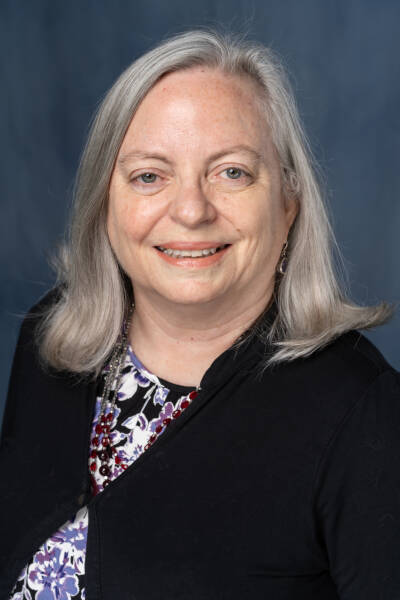
The University of Florida (UF) College of Nursing had seen years of student satisfaction and positive outcomes using Shadow Health when the pandemic hit. When the need for more simulation-based learning developed as a result, their program adopted additional Shadow Health modules as well as Elsevier’s Simulation Learning System (SLS) to supplement gaps in clinical learning.

Dr. Jane Gannon, Assistant Dean of Simulation Based Learning at the UF College of Nursing, has successfully incorporated Shadow Health with students for over a decade. The MSN program at UF used Shadow Health’s Digital Clinical ExperiencesTM (DCE) featuring simulated patient Tina Jones for their Advanced Health Assessment course starting in 2012 as an activity before their lab.
As the program structure changed at UF, so did their use of Shadow Health. In 2014, faculty started using the Health Assessment DCE featuring Tina for nursing simulation scenarios for the BSN program.
Pleased by the results of Shadow Health, evidenced by survey data on student feedback, they explored opportunities to incorporate more Shadow Health DCEs.
“I like having that data, because every once in a while, I’ll run into a faculty member who’s not convinced that this is really necessary or is helping the students. I can take that survey data and show them that the students perceive it positively,” Gannon says. “We’ve got both a confidence and satisfaction perspective.”
UF’s expansion of Shadow Health across the curricula was expedited by COVID-19. After the spring semester in 2020, they charted a plan to add more opportunities for students to access Shadow Health in more nursing simulation scenarios.
“There’s a lot of diversity in the patients that the students have to look after which we haven’t had in some of our other materials that we’ve used to teach our students, such as obstetric and pediatric concepts in care delivery,” Gannon says.
Additional Elsevier Support
The COVID-19 pandemic gave faculty at UF an opportunity to incorporate other clinical simulation solutions, such as SLS. The UF faculty were already planning to use SLS in the summer of 2020 for their incoming students.
When meeting in-lab was no longer an option and it became clear that summer that students would be online for another semester, the UF faculty ramped up their use of Shadow Health. Gannon says this not only supplemented their clinical hours but helped reinforce clinical reasoning skills in an online environment in a way they might not otherwise have been able to.
“We’re exposing the student to a very content-specific focused simulation of a patient with a problem, whereas on the unit, it’s a matter of what’s available today,” Gannon says.
Student Learning
The UF program embraces a mastery learning approach and allows students to submit multiple attempts until the assignment due date for students who want to try to improve their score. This applies to both Shadow Health scenarios and lab simulation. Gannon says she thinks that process helps students better understand the material.
For example, Dr. Gannon teaches the maternal child course during the fall semester and has seen the impact of Shadow Health on student learning compared to past performance.
“I really love the maternal and pediatric case studies, and we had an increase in our overall average for our exams, moving from the low 80s to the mid 80s,” Gannon says. “That’s something I’m keeping an eye on to see if we can sustain that now that we’re using that product.”
Not only does Shadow Health help students learn more in-depth to improve their course outcomes, but Gannon says it’s a great source for clinical experience when they may not have an opportunity to conduct enough patient interactions.
For instance, in their maternal course, students may only have a couple of days in the labor and delivery or pediatric units. Shadow Health assignments help these students gain additional clinical hours and meet their requirements.
“We have a wide access to Shadow Health so we know there’s plenty of hours that faculty can assign to their students,” Gannon says. “We actually hold some [Shadow Health scenarios] back so that when we have a student that misses a clinical day, we can give them a couple of virtual cases that the student can do in lieu of that.”
Dr. Gannon says that having Shadow Health as an option for students to make up lost clinical time also saves faculty time and helps them manage their workload.
Best Practices for Integration
To highlight the value of the solutions across the curriculum, Gannon advises leveraging support from the Shadow Health team at Elsevier with clear instructions for faculty on how to make the most of the features available.
Gannon says she strongly urges faculty to get as much utilization of Shadow Health scenarios as possible. She often suggests replacing paper case studies with Shadow Health simulations to bring these innovative tools into their teaching.
“Once they see how to use it, faculty typically are more open to try it and see how it works,” Gannon says.
Learn more about Shadow Health